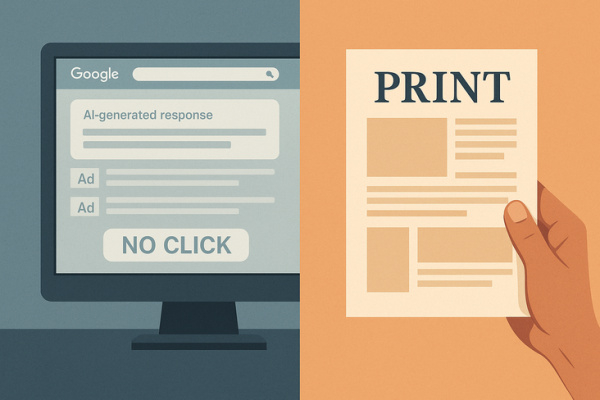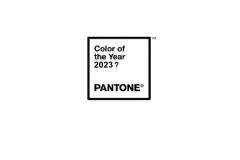The promise of all-digital collapses
You don't have to look far: according to a Similarweb study published in July 2025, between 60% and 70% of Google searches no longer even result in a click to an external site. According to Gartner, by the end of 2026, brands that have relied exclusively on traditional SEO will see their traffic drop by 40-60%. There's no shortage of content, but the marketing returns don't keep up. As a result, an SEO strategy that used to generate audiences at low cost is now becoming a drain on resources.
Digital relationship marketing collapses too
Even the so-called "relational" levers, long considered inexpensive and effective, are no longer living up to their promise. Cold emailing, in particular, has been hard hit in recent weeks by the tightening of anti-spam filters imposed by Google, Microsoft and the major messaging services. A growing proportion of commercial messages never reach the inbox.
On social networks, the situation is no better. Accounts with thousands or even tens of thousands of subscribers struggle to generate any visible engagement. Publications go unnoticed, interactions plummet. Organic content becomes mute, audiences inert. Direct contact with customers erodes, even when you thought you'd won them over.
Increasingly expensive online advertising for disappointing results
Advertising budgets just don't keep up. Not for lack of investment, but because the rules have changed. Advertising algorithms favor easy clicks: ads are served to people who already know your brand or on searches containing your name. This is no longer acquisition, it's recycling.
At the same time, competition is intensifying. Each company pushes its content on the same channels, at the same times. Campaigns look the same, formats loop, attention is scattered. And yet, costs are rising: CPC, CPM, CPA... the indicators are racing ahead, while conversion rates are stagnating. We're paying more to reach less.
And what about artificial intelligence?
AI has established itself as a new filter. There's no need to click: answers are displayed directly in search results, generated by artificial intelligence models. Original content is often repeated, summarized, diluted... without even going to the source.
It's always the same brands, omnipresent in the learning corpus, that benefit. Their visibility feeds their notoriety, which in turn strengthens their presence in the results. A closed circle.
Meanwhile, SMEs, emerging brands and independents are disappearing from the screens. Their content is little picked up, little quoted, and even when it is relevant, it remains invisible. AI doesn't redistribute the cards. It confiscates them.
A tactile, tangible and credible medium
Paper hasn't changed, but our relationship with it has. In a world saturated with screens, receiving a card, catalog or invitation creates a moment of pause. Print captures attention. It can be touched, kept and reread.
It's also perceived as a more reliable medium. Paper publications inspire greater confidence, especially in institutional or premium contexts.
It's all about getting the right content at the right time. High-quality paper, a meticulous finish, an original format: these are all elements that digital cannot reproduce. Print then becomes a communication object in its own right.
Paper is not an isolated island
Far from the opposition between digital and print, the "phygital" strategy is taking root. A catalog with audio or video tags, a flyer with a QR code, a leaflet with a link to a website: paper becomes an entry point to an enriched digital experience.
The interest is twofold. On the one hand, we can measure what triggers the print medium. On the other, customers move seamlessly from one channel to another, in the service of a coherent omnichannel strategy.
Better targeting, better segmenting
Thanks to the data available, print becomes a fine-tuning tool. Gone are the days of the "catch-all". Make way for selective direct mail campaigns, based on profiles, behaviors or geographic zones.
Printers who integrate data marketing or geomarketing services add a strategic string to their bow. And offer their customers tailor-made campaigns with tangible returns.
An eco-friendly medium
Paper is no longer the enemy of the forest. It's recyclable, biodegradable and often certified. And the entire production chain - inks, short circuits, waste management - can be traced and valorized.
In the face of invisible but very real digital pollution, this is an argument that counts. Printers can turn it into an asset, provided they make a visible and structured commitment to it.
From mere executor to strategic partner: a necessary change of posture
Until a few years ago, the printer received a file and launched production. The rest (targeting, creation, message, distribution) was left to others. Those days are gone, the communications agencies on every street corner have disappeared, and customers expect more from a single contact.
Today, companies are looking for partners capable of thinking upstream, not just producing downstream. Print professionals can no longer simply "take orders". They need to understand the global marketing context, ask the right questions and propose appropriate solutions: which format for which use? Which paper for which feel? What level of finish for what positioning? What timing for what sales action?
This advisory role cannot be improvised. It requires a thorough understanding of the customer's objectives, as well as production constraints, channel usage and new technical possibilities (personalization, print/digital hybridization, traceability, etc.). This is where the printer becomes indispensable once again. As a partner, he no longer just sells printed sheets. He builds campaigns, imagines relevant media, helps calibrate messages. He becomes a source of ideas. And this positioning has one major advantage: it restores value to work. It's no longer a question of doing things "cheaper" or "faster", but of doing things better, combining efficiency, brand consistency and cost control.
Those who take on this role will stand out from the crowd. Not as subcontractors, but as co-pilots.







